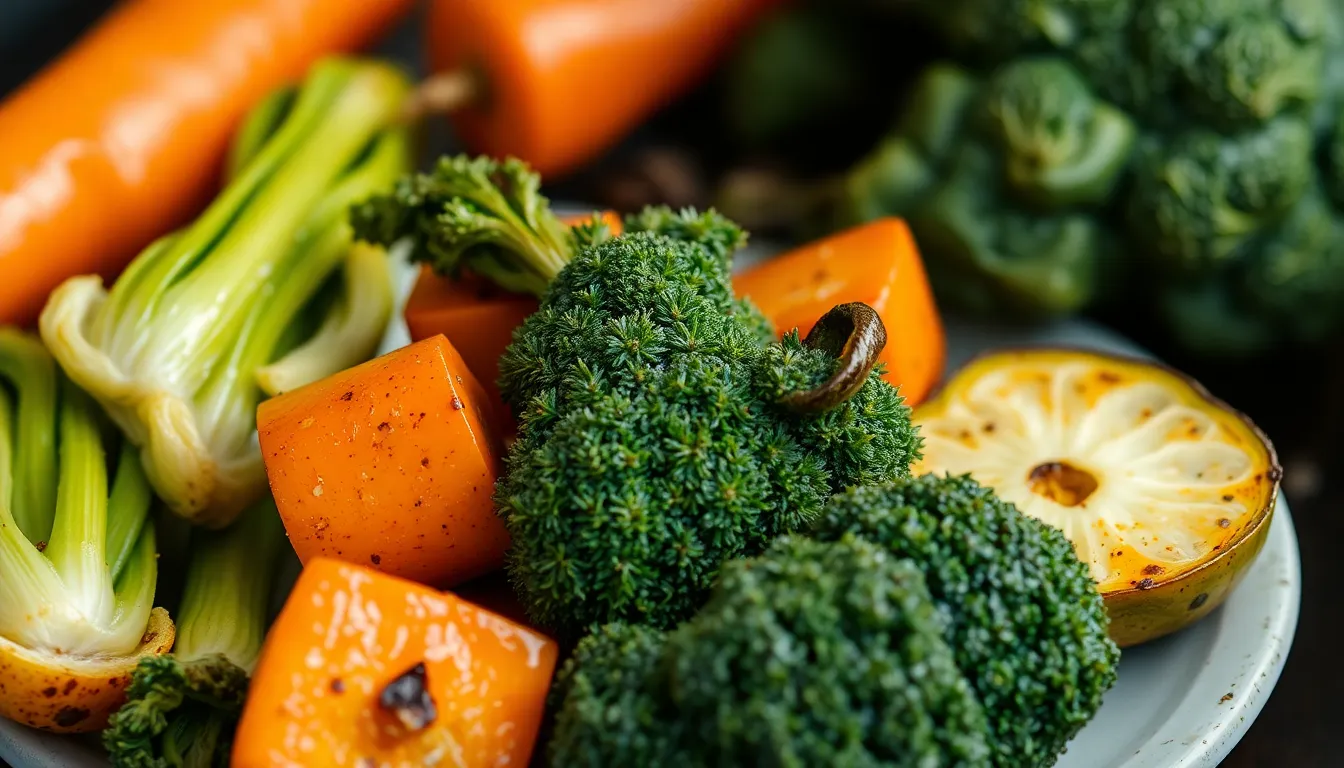The Best Roasting Techniques for Vegetables
Introduction
Roasting vegetables is one of the simplest yet most effective ways to enhance their natural flavors. The process of roasting caramelizes the sugars in vegetables, creating a depth of flavor that can transform any meal. Beyond their delicious taste, roasted vegetables are an excellent source of vitamins and minerals, making them a healthy addition to any diet.
From Mediterranean dishes to Asian stir-fries, roasted vegetables are incredibly versatile, fitting seamlessly into a wide array of cuisines. In this article, you will learn about the best types of vegetables to roast, how to prepare them, various roasting techniques, flavor-boosting methods, and creative serving ideas.
Section 1: Choosing the Right Vegetables
Subsection 1.1: Types of Vegetables Best for Roasting
Not all vegetables are created equal when it comes to roasting. Here are some of the best choices:
- Root Vegetables: Carrots, potatoes, beets, and parsnips have a natural sweetness that intensifies when roasted.
- Cruciferous Vegetables: Broccoli, cauliflower, and Brussels sprouts have a robust texture that benefits from the roasting process.
- Other Options: Zucchini, bell peppers, asparagus, and mushrooms also roast beautifully, adding variety to your dishes.
Subsection 1.2: Seasonal Considerations
Using seasonal vegetables not only enhances flavor but also supports local farmers and reduces carbon footprint. Here are some tips for sourcing fresh produce:
- Visit farmers’ markets to find freshly harvested veggies.
- Join a local CSA (Community Supported Agriculture) for seasonal produce delivered to your door.
- Grow your own vegetables, if possible, for the freshest ingredients.
Section 2: Preparing Vegetables for Roasting
Subsection 2.1: Cleaning and Cutting
Proper washing and cutting techniques are essential for evenly cooked roasted vegetables:
- Wash vegetables thoroughly under running water to remove dirt and pesticides.
- Use a vegetable brush for root vegetables to ensure they’re clean.
- Chop vegetables into uniform sizes to promote even cooking; aim for 1-inch pieces.
Subsection 2.2: Seasoning Essentials
Seasoning is key to elevating the flavors of roasted vegetables. Here are some essentials:
- Common Seasonings: Salt, pepper, and olive oil are a must. Olive oil helps to achieve that crispy, golden finish.
- Suggested Herbs and Spices: Thyme, rosemary, garlic powder, cumin, and smoked paprika can add an extra punch of flavor.
Section 3: Roasting Techniques
Subsection 3.1: Oven Roasting
Oven roasting is the classic method for preparing vegetables. Here are the ideal temperatures and cooking times:
| Vegetable | Temperature (°F) | Cooking Time (minutes) |
|---|---|---|
| Carrots | 425 | 25-30 |
| Potatoes | 425 | 30-35 |
| Broccoli | 425 | 20-25 |
| Brussels Sprouts | 400 | 25-30 |
| Zucchini | 425 | 15-20 |
For the crispiest texture, ensure vegetables are spread out in a single layer on a baking sheet. Avoid overcrowding, as this can cause steaming instead of roasting.
Subsection 3.2: Sheet Pan Roasting
This method allows you to roast multiple vegetables at once. Here are some benefits:
- Efficient use of time and energy.
- Flavors meld beautifully when roasted together.
- You can add proteins like chicken or grains like quinoa to create a complete meal.
Arrange your vegetables and proteins on a sheet pan, drizzle with olive oil, sprinkle with seasonings, and roast!
Subsection 3.3: Grilling Vegetables
Grilling vegetables adds a unique flavor profile. Follow these best practices for grilling:
- Preheat the grill and ensure it is hot enough to create grill marks.
- Use a grill basket for smaller vegetables to prevent them from falling through the grates.
- Brush vegetables with oil to prevent sticking and enhance flavor.
Section 4: Flavor Boosting Techniques
Subsection 4.1: Using Marinades
A marinade can significantly enhance the flavor of roasted vegetables. Here are some simple marinade recipes:
- Balsamic Vinegar Marinade: 1/4 cup balsamic vinegar, 1/4 cup olive oil, 2 cloves minced garlic, salt, and pepper.
- Lemon Herb Marinade: 1/4 cup lemon juice, 1/4 cup olive oil, 1 tablespoon fresh thyme, salt, and pepper.
Subsection 4.2: Adding Finishing Touches
Enhance your roasted vegetables with these finishing touches:
- Top with grated parmesan cheese or crumbled feta for a savory kick.
- Sprinkle with toasted nuts for added crunch.
- Drizzle with balsamic glaze or fresh lemon juice just before serving for brightness.
Section 5: Creative Serving Ideas
Subsection 5.1: Incorporating Roasted Vegetables into Meals
Roasted vegetables can elevate many dishes. Here are some ideas:
- Salads: Toss roasted vegetables into mixed greens with your favorite dressing.
- Bowls: Create grain bowls with quinoa or rice, topped with roasted veggies and a protein source.
- Side Dishes: Serve as a colorful side alongside meats or fish.
Subsection 5.2: Roasted Vegetable Storage Tips
To extend the life of your roasted vegetables, follow these storage tips:
- Store leftovers in an airtight container in the refrigerator for up to 4 days.
- Freeze roasted vegetables in freezer-safe bags for up to 3 months.
- Reheat in the oven or a skillet to retain some of the original crispiness.
Conclusion
Roasting vegetables is a simple yet rewarding technique that brings out their natural flavors. By selecting the right vegetables, preparing them thoughtfully, and employing various roasting methods, you can create delicious dishes that complement any meal. Enhancing flavors with marinades and toppings can take your roasted veggies to the next level. So, whether you choose to toss them into salads, create nutritious bowls, or serve them as a side, roasted vegetables will always be a delightful addition to your table. Happy roasting!




